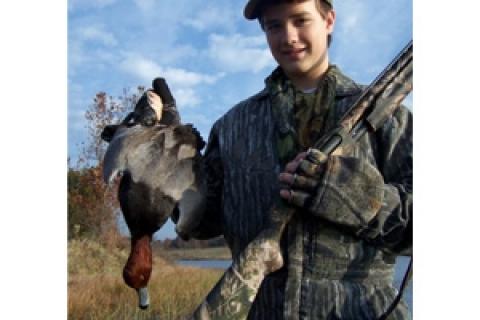
 Many waterfowl hunters have reported their best year ever in the duck blind.
Many waterfowl hunters have reported their best year ever in the duck blind.
It is certainly another banner year for ducks. With more than 45 million mallards, teal gadwall and other species winging their way south, duck hunters will enjoy an outstanding season. Numbers are down slightly from 2012's record year, but still 33 percent above the long term average.
With those kinds of duck numbers, one would expect the marshes to be teaming with duck hunters, as well. Sadly, that is not the case. Duck hunter numbers have been falling steadily since the 1970s, down almost 40 percent.
The sharp decline has meant a loss of $126 million in conservation funding between 1995 and 2008. Needless to say, waterfowl managers are gravely concerned. Their fears are not just about funding. They go far deeper. "This is not just about funding." said Delta Waterfowl Vice-President of U.S. Policy John Denvey. "Look what happened to fox hunting in England. Once you fall below a certain threshold of constituents, you no longer become relevant. You need political heft to help shape policy that benefits ducks and duck hunters."
Money talks, too. Anyone can use our National Wildlife Refuges, but hunters are the largest source of funding. State conservation programs are suffering from the drop in conservation spending as well. Nebraska Waterfowl Program Manager Mark Vrtiska said, "If current trends continue, the future looks bleak. Our predictions of future waterfowl hunter numbers...ranged from 569,000 to 1.3 million hunters, and estimated annual revenue losses would range from $8.5 million to $19.5 million per year."
This decrease in revenue would result in the lost opportunity to annually conserve from 6,8889 to 34,427 acres of habitat in South Dakota at current land prices, according to Vrtiska. High commodity prices are causing farmers to drain seasonal wetlands at a record pace. The trend follows in other states as well.
Duck numbers have been high in recent years due to a string of wet years in the Prairie Pothole Region. Denvey warns that dry weather combined with decreased nesting habitat would result in a population crash. That would mean even fewer duck hunters.
Duck hunting is not about conservation, however. It is about enjoying a hunt with family and friends, being outdoors and eating a bird you harvested. It is about fun in the outdoors.
So what is the problem? Duck hunters are declining for simple reasons: access and excessive regulations. Duck hunters need places to hunt. Outfitters and the wealthy lease up the best lands. Most private lands that receive government aid for wetlands improvements remain closed to hunters. And, young hunters often point to hardline regulations as a reason for not coming into the sport.
Quick, efficient change is needed to save duck hunting. Simply put, it will die out if legislators do not act quickly.
Government agencies need to require landowners to allow public access if they are accepting tax based funds for wetlands improvements. Access problem solved.
The USFWS needs to change waterfowl regulations to allow duck hunters, especially newcomers, to harvest 4 ducks of any species, rather than 6 of a mixed species bag, which may be made up of a combination of numbers. Example: 4 mallards, of which only two can be female, 2 pintails, 3 scaup, etc. Identifying ducks in flight is difficult, especially for beginners. This factor is one of the main reasons duck hunter numbers are falling. Change the regulations and the recruitment problem is solved.
Contact your congressman to help save millions of conservation dollars and the future of duck hunting.
- 3245 views

